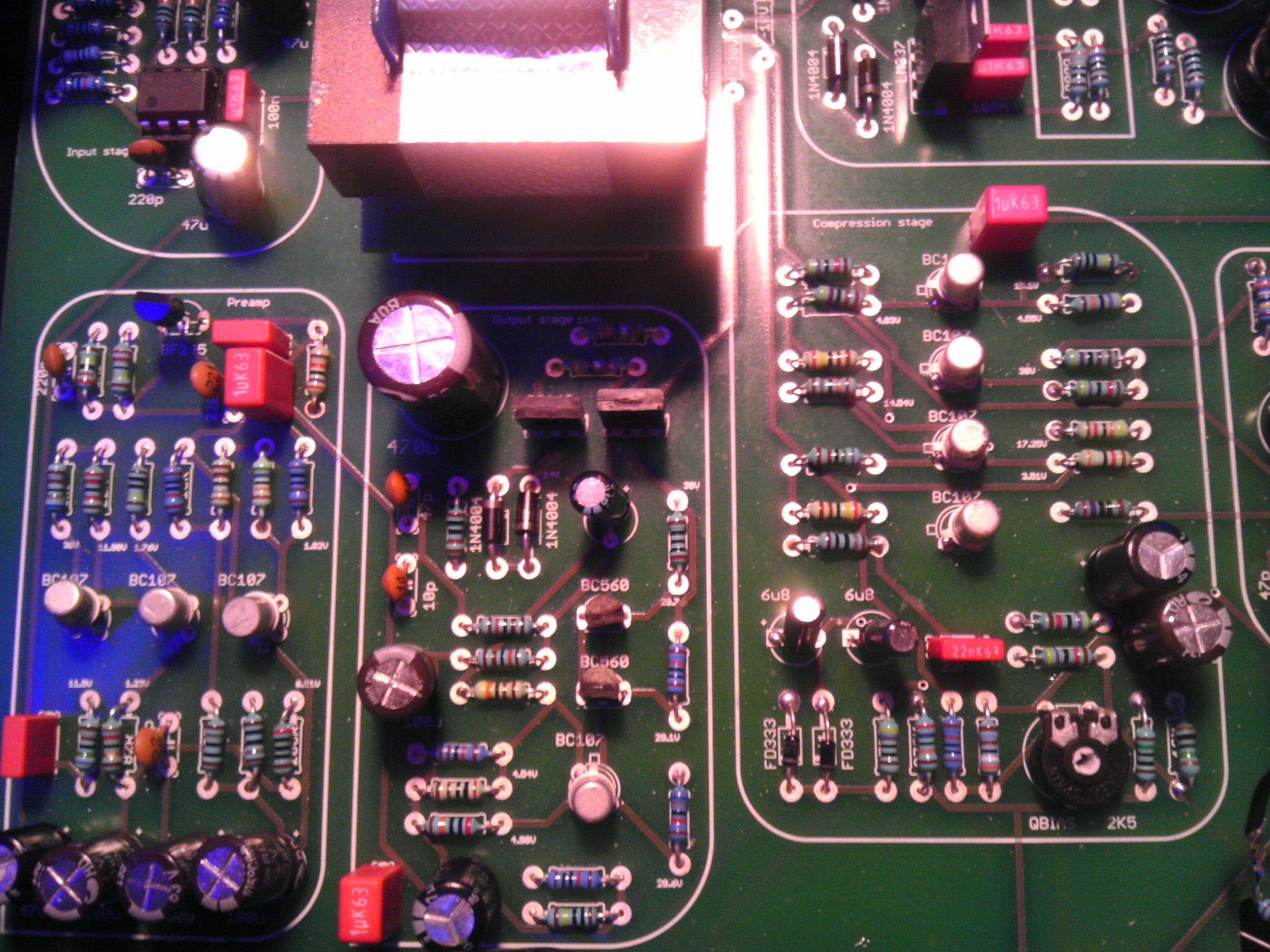Ok this is getting frustraiting, I´ve check all conections ans solder bolbs and everything is fine, audio signals and V are fine I guess :-\ i compared with G1176 schem but some components on FET grinder are diferent and wasnt sure what V. should I read.
all the controls except input and output doesnt affect the audio, I cant notice any compression switching ratios, Q-Bias trimmer to start callibrating is not turning it from CW instead from CCW.
Good conection from board to Controls!
O maaaaaaan!! can some one tell me from where start investigating to make this little monster to compress??
Thanks
all the controls except input and output doesnt affect the audio, I cant notice any compression switching ratios, Q-Bias trimmer to start callibrating is not turning it from CW instead from CCW.
Good conection from board to Controls!
O maaaaaaan!! can some one tell me from where start investigating to make this little monster to compress??
Thanks



